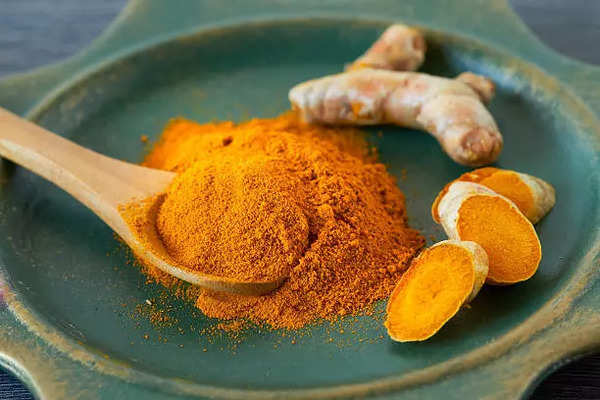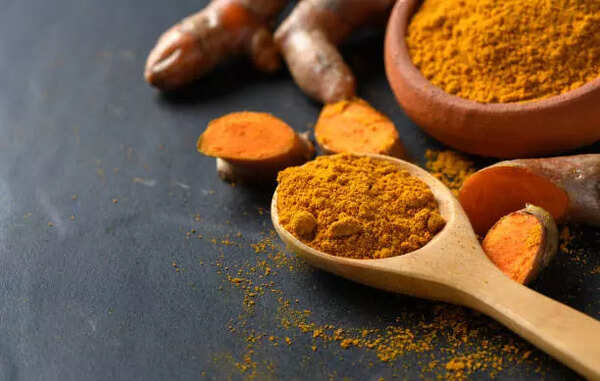Turmeric vs Curcumin: What’s the difference and how they impact skin and hair – The Times of India

Turmeric has been a staple in Indian households for generations – used in food, healing remedies, and beauty rituals alike. From haldi ceremonies to DIY face packs, it’s been our go-to for everything from glowing skin to a quick zit fix. But lately, curcumin, the star compound inside turmeric, has been getting its own moment in the spotlight.
So, what’s the real difference between turmeric and curcumin? Can you use them interchangeably in your beauty routine? And more importantly, how do they actually help your skin and hair? Let’s break it down.
First up: What exactly is turmeric?
Turmeric is that vibrant yellow-orange spice that comes from the root of the Curcuma longa plant. In Ayurveda and traditional medicine, it’s been used for over 4,000 years for everything from digestion to skin issues. When it comes to beauty, it’s known for being anti-inflammatory, antibacterial, and packed with antioxidants.
And what about curcumin?
Curcumin is the active compound found in turmeric. It’s what gives turmeric its signature colour and most of its powerful healing properties. But here’s the catch, turmeric only contains about 2 to 5% curcumin. That’s why curcumin is often extracted and used in supplements or skincare products for more targeted benefits.
In simple terms:

Turmeric is the whole spice (with lots of benefits).
Curcumin is the most potent part of it.
Turmeric vs Curcumin: How they work on skin
1. For brighter, clearer skin
Turmeric:
Turmeric has always been a favourite for brightening the complexion. It helps with pigmentation, dullness, and dark spots, and leaves your skin with that post-facial glow. Used in a face mask, it gently exfoliates and revives tired-looking skin.
Curcumin:
This one works on a deeper level. Curcumin helps reduce melanin production (which causes dark spots), making it super effective for evening out skin tone and fading acne scars when used in serums or creams.
2. Fighting acne and inflammation
Turmeric:
With its antibacterial properties, turmeric can calm breakouts and reduce oiliness. It also soothes redness, which makes it ideal for acne-prone or sensitive skin.
Curcumin:
Curcumin takes it a step further by directly targeting the bacteria that cause acne. It also helps with post-acne inflammation and may speed up healing, making it great for long-term acne control.
3. Anti-ageing benefits
Turmeric:
Thanks to its antioxidant properties, turmeric helps protect your skin from environmental stress, UV rays, and pollution. It supports elasticity and reduces the appearance of fine lines over time.
Curcumin:
Curcumin is a powerhouse when it comes to ageing skin. It promotes collagen production and slows down enzymes that break down skin structure. Basically, it helps keep your skin firm, plump, and youthful for longer.
Now let’s talk about hair benefits
1. Dandruff control and scalp health
Turmeric:
Applied as a paste or mask, turmeric can soothe an itchy, flaky scalp. It helps reduce dandruff, scalp irritation, and even mild fungal infections.
Curcumin:
Curcumin’s anti-inflammatory properties are especially useful if you’re dealing with conditions like scalp psoriasis or dermatitis. It also improves blood circulation in the scalp, which means a healthier environment for hair to grow.
2. Preventing hair fall and boosting growth
Turmeric:
Turmeric-infused hair oils or masks can help detoxify the scalp and strengthen hair from the roots. While results take time, it’s a great natural approach to hair fall.
Curcumin:
Curcumin shows promise in reducing DHT—a hormone linked to hair loss, especially in men. If you’re dealing with pattern baldness or thinning hair, curcumin-based treatments might be worth looking into.
Which one should you use?
If you’re into simple, natural beauty routines and love whipping up DIY face packs at home, turmeric is your go-to. It’s easy to find, budget-friendly, and safe for most skin types (as long as you don’t overdo it).

But if you’re looking for more targeted, high-performance skincare, especially for concerns like pigmentation, stubborn acne, or signs of ageing – curcumin is the more potent choice. You’ll usually find it in high-quality serums or supplements designed to go deep and deliver results.
A heads-up
Turmeric can stain your skin a little yellow if you use too much. Curcumin, on the other hand, is usually processed to avoid staining and increase absorption. Also, curcumin is often combined with black pepper extract or oil-based carriers in supplements or creams to boost its effectiveness.
How to add turmeric and curcumin to your routine
DIY turmeric face pack
Mix 1 teaspoon of turmeric with 2 tablespoons of yoghurt or honey. Add a few drops of rose water if you like. Apply to clean skin for 10–15 minutes, then rinse for soft, glowing skin.
Curcumin-infused skincare
Look for curcumin in products like brightening serums, acne treatments, or antioxidant-rich moisturisers. These are usually more stable and targeted than raw turmeric and better for consistent use.
Turmeric and curcumin are both amazing for skin and hairbut they’re not exactly the same. Turmeric is the all-rounder that’s perfect for home remedies and gentle care. Curcumin is the more concentrated version, great for tackling specific concerns with science-backed precision.
Whether you are reaching for your haldi dabba or a fancy curcumin serum, there’s no denying that this golden ingredient is a beauty essential worth exploring.




